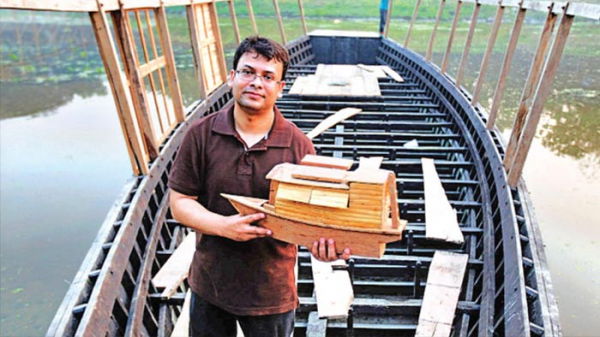Mohamed Rezwan

Throughout his childhood, Rezwan had seen people struggle bravely through floods and terrible cyclones, picking themselves up and rebuilding their lives time and time again. Despite suffering poverty and hardship, they kept smiling and showed great resilience and hope. He believed that, if only they had more resources and support, they would be able to achieve amazing things this made Mohamed want to do everything he could to help them.
After attending collage in Dahka, Rezwan studied architecture for his community, but he quickly realized that those buildings would simply end up underwater. This is because despite producing far fewer green house gases than the rest of the world's rich naitions, Bangladesh is the country most affected by climate change. To the North, in the Himalayan mountains glaciers are melting, bringing more water into the rivers, along with sediment that settles and makes the rivers shallower. Land beside rivers is washed away as they get wider. To the south, sea levels are rising and submerging the land. During the monsoon season, one fifth of the land in Bangladesh is flooded, but at worst this can be up to two thirds of the country. It's estimated that, if the situation continues, the country will permanently lose up to one fifth of it's land underwater.
Rezwan saw the effects of climate change and knew that he had to find a different way of approaching his buildings designs . He thought of the boat builders he had often watched as a boy and he had an idea; if children couldn't go to school then school would come to them. He would build floating schools.
With the help of a boatman and teacher, also from the community, his first floating school was launched in 2002. Villagers were skeptical at first. They had never heard of floating schools before . On the first day, only one child attended, by the end of the week there were six, and by the end of the month they had thirty pupils. As people saw the benefits, more wanted to send there children to school, including many parents of girls. So Rezwan added more boats and by the end of 2004 the idea went worldwide.
Extra quick facts:
- Girls weren't allowed to go to school, because their parents worried about their safety on the long walk, they were often expected to stay at home and help their mothers.
- In Bangladesh, one-third of the girls are married by the age of fifteen and two thirds by eighteen!
- Rezwans school was nearly 90 minutes away on foot.
- In North west Bangladesh it is monsoon season from June through to October, which causes schools to be closed due to roads and homes being flooded and sometimes even schools.



